As the old Sam Cooke song goes:
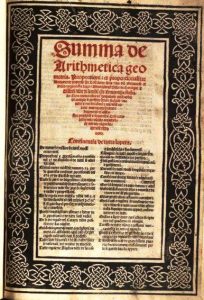 Don’t know much trigonometry
Don’t know much trigonometry
Don’t know much about algebra,
Don’t know what a slide rule is for
But I do know that one and one is two,
And I do know something about early printing and history. And books of firsts are always fun. So there is much to love about Luca Pacioli’s Summa de arithmetica, geometria, proportioni et proportionalita (Summary of arithmetic, geometry, proportions and proportionality), printed in Venice in 1494.
This title is one of the more famous works in the history of mathematics. It is the first printed book on algebra written not in scholarly Latin but in a vernacular language (Italian, except for the title and headings). It draws on the writings of the great Renaissance painter, Piero della Francesca, as well as Euclid’s geometry. A compendium of collected knowledge, the Summa nevertheless presents the revolutionary concept of the mathematician providing proportion and scale to art.
It is the first printed book on algebra written not in scholarly Latin but in a vernacular language (Italian, except for the title and headings). It draws on the writings of the great Renaissance painter, Piero della Francesca, as well as Euclid’s geometry. A compendium of collected knowledge, the Summa nevertheless presents the revolutionary concept of the mathematician providing proportion and scale to art.
Fueling the cultural rebirth of art in the fifteenth century was a renaissance in business and economics. Although Pacioli did not invent the system, his Summa has the first description on double-entry bookkeeping (in folios 198-210), a short but tremendously influential section. This is the accounting equation of assets equals liabilities plus owner’s (or stockholder’s) equity. Written in the common tongue, the mechanics of transactions in the marketplace were made accessible to the mercantile class in this work. The close connection between gaming and economics is also pointed out in the pages of the Summa. The author mentions the financial “Rule of 72,” a method for estimating an investment’s doubling time. Included are tables of currencies and the weights and measures used in the various Italian states. The volume is very much about business, of great use to the Venetian merchants. Pacioli declared “a merchant must be a good bookkeeper.”
Luca Pacioli (1445-1517) was a tutor, Franciscan friar, and, later, a university lecturer. His Summa de arithmetica was a summary of mathematical studies of the time, a textbook that is still admired for its approach to teaching. It is an example of one of the Dibner Library’s incunabula (literally, “things in the cradle”), a book produced before 1501, the earliest years of printing. It is a fine specimen, with some printing in red and black, a lovely woodcut strapwork border (white on black background), large ornamental initials, full-page images of finger counting and a tree of proportion, and illustrations of weighing instruments and barrels. This copy was read carefully by a previous owner as there are early manuscript annotations.
Pacioli must have been a great teacher. He works in proverbs in his discourses, including “Who does nothing, makes no mistakes; who makes no mistakes learns nothing.” The author lays out in his Summa the correct use of ledgers and admonished that no one should end the work day without balancing the books, making sure that the debit and credit columns agree. Oh, if I could achieve that with my accounts, and understand his method of determining economic returns, what a wonderful world this would be!
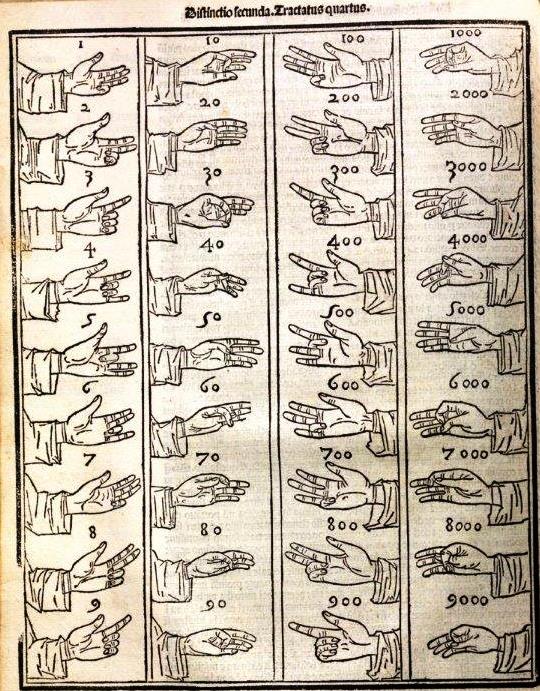
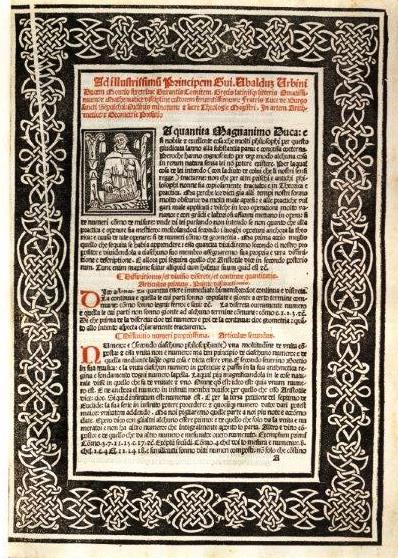
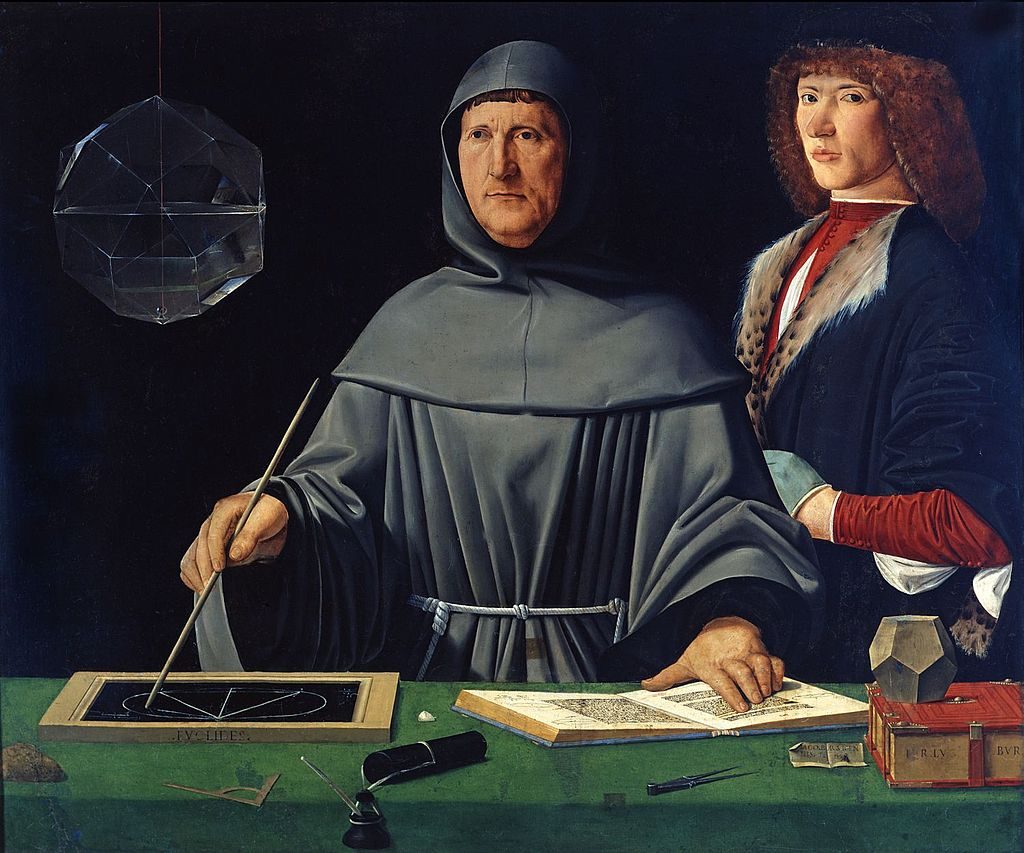


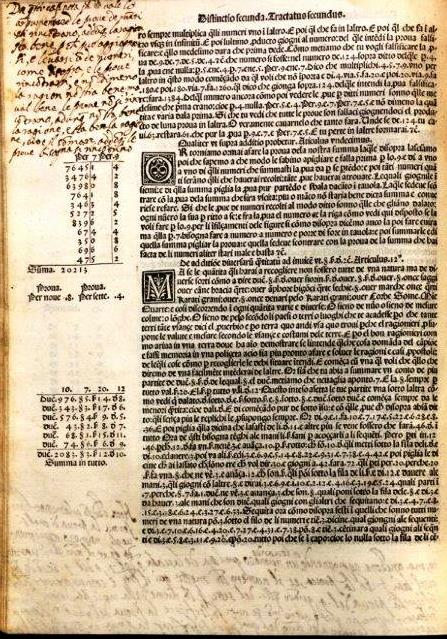
Be First to Comment